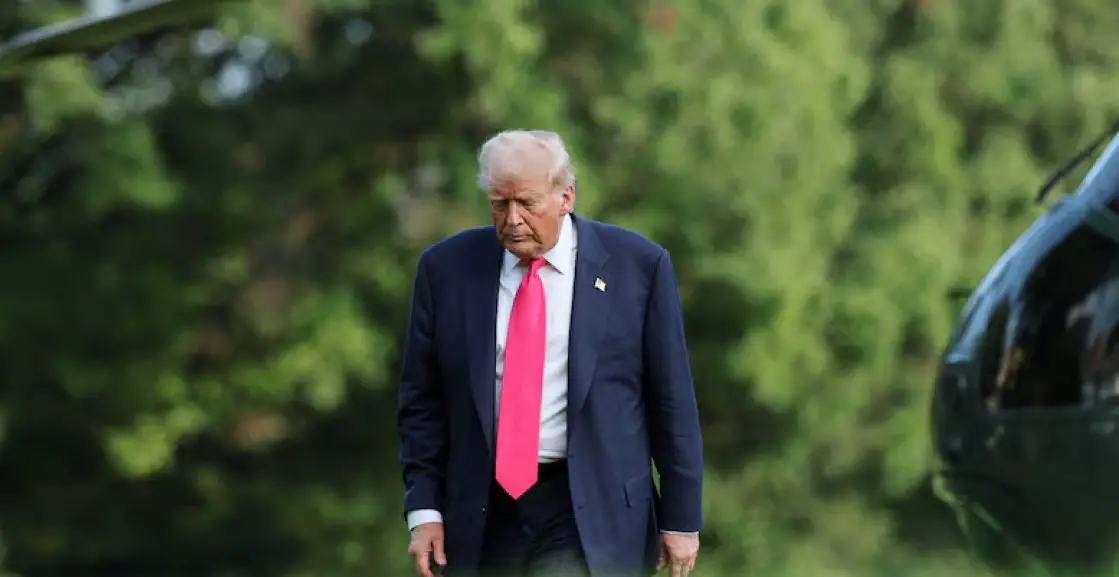A bombshell intelligence report has emerged that fundamentally challenges the narrative surrounding one of the most consequential political investigations in modern American history. The revelations contained within this document paint a picture of institutional manipulation and political weaponization that extends far beyond what the public previously understood about the events of 2016 and their aftermath.
The implications of these findings reach into the highest levels of America’s intelligence apparatus and raise profound questions about accountability, institutional integrity, and the potential for similar abuses in the future. Legal experts are calling it evidence of the most sophisticated political operation ever conducted against a presidential candidate, with ramifications that continue to reverberate through American politics today.
The Intelligence Community’s Internal Conflict
At the heart of this controversy lies a newly released report from current CIA Director John Ratcliffe that exposes deep fractures within the intelligence community during the critical months surrounding the 2016 presidential election. The document reveals how senior officials allegedly overruled experienced analysts and suppressed dissenting voices within their own agencies to advance a predetermined narrative.
Fox News legal analyst Gregg Jarrett has extensively analyzed the report’s findings, describing them as confirmation of what many suspected but could never prove definitively. According to Jarrett’s assessment, the report demonstrates how former CIA Director John Brennan, along with other Obama-era intelligence officials, systematically worked to include questionable intelligence materials in official assessments despite significant internal opposition.
The report details how seasoned CIA analysts raised serious concerns about the reliability of certain intelligence sources, particularly regarding alleged connections between the Trump campaign and Russian operatives. These analysts, according to the document, were reportedly pushed aside when their assessments didn’t align with the preferred narrative of senior leadership.
One particularly striking revelation involves a written warning from the CIA’s deputy director for analysis, who allegedly cautioned that including certain unverified materials would severely damage “the credibility of the entire paper.” This warning, according to the report, was ignored by senior officials who proceeded with their original plan.
The Steele Dossier’s Controversial Journey
Central to these allegations is the infamous Steele dossier, a collection of unverified claims compiled by former British intelligence officer Christopher Steele. The document’s journey from opposition research to official intelligence assessment represents one of the most controversial aspects of the entire affair.
The dossier was initially commissioned and funded by Hillary Clinton’s presidential campaign through the opposition research firm Fusion GPS. This connection created an inherent conflict of interest that critics argue should have disqualified the material from serious intelligence consideration. The report suggests that despite knowledge of this funding source, senior officials pushed for the dossier’s inclusion in official intelligence products.
Particularly troubling are allegations that the FBI had already largely debunked the dossier’s claims before President Trump was even inaugurated. According to the report, the bureau had fired Christopher Steele as a confidential human source for lying, yet continued to use his work as a foundation for ongoing investigations. This contradiction raises serious questions about institutional honesty and accountability.
The role of Bruce Ohr, a Department of Justice official whose wife worked for Fusion GPS at the time, adds another layer of complexity to the story. Critics argue that this connection created additional conflicts of interest that were not properly disclosed or managed during the investigation process.
Institutional Manipulation and Oversight Failures
Perhaps most concerning are allegations that normal intelligence community processes were deliberately circumvented to achieve desired outcomes. The report suggests that former CIA Director Brennan not only ignored internal dissent but actively blocked other intelligence agencies from contributing their assessments to the final product.
This manipulation allegedly extended to the very structure of the intelligence assessment itself. By controlling which agencies could participate and which analysts could contribute, senior officials reportedly ensured that dissenting voices were marginalized or eliminated entirely from the final report.
Former Director of National Intelligence James Clapper and former FBI Director James Comey are also implicated in these allegations. The report suggests that these three senior officials worked in concert to “smear Trump with what is surely the dirtiest trick in political history,” as Jarrett characterizes it.
The coordination between these agencies represents a significant departure from normal intelligence community protocols, which typically encourage diverse perspectives and rigorous debate before reaching conclusions on matters of national importance.
The Durham Investigation’s Revelations
The controversy gained additional credibility in 2023 when Special Counsel John Durham concluded his investigation into the origins of the Trump-Russia probe. Durham’s findings, which received limited mainstream media coverage, determined that there was no substantial evidence supporting claims of collusion between the Trump campaign and Russian operatives.
Durham’s report effectively validated many of the concerns raised by critics of the original investigation, lending credence to claims that the entire affair was built on questionable foundations. The special counsel’s findings represent years of careful investigation and provide an authoritative counternarrative to the original Trump-Russia allegations.
The timing of Durham’s conclusions, combined with the new CIA report, creates a compelling case that serious misconduct occurred at the highest levels of the intelligence community. These dual revelations suggest that what many dismissed as conspiracy theories may have contained substantial elements of truth.
Current Criminal Investigation
The controversy has now entered a new phase with the FBI’s decision to open a criminal investigation into John Brennan himself. This investigation reportedly focuses on whether the former CIA director committed perjury when he testified to Congress in 2019 that the Steele dossier “was not in any way used as the basis for the intelligence community’s assessment.”
This sworn testimony now appears to directly contradict the findings of the new CIA report, which allegedly shows that Brennan played a central role in ensuring the dossier’s inclusion in official intelligence products. If proven, these contradictions could constitute criminal perjury, carrying serious legal consequences.
James Clapper may face similar scrutiny, as he made nearly identical claims in his own congressional testimony. The potential for criminal charges against two former senior intelligence officials represents an unprecedented development in American political history.
Media and Career Consequences
Ironically, despite these serious allegations, many of the officials involved have experienced professional success since leaving government service. Brennan became a national security analyst at MSNBC, Clapper joined CNN as a contributor, and Comey has profited from book deals and speaking engagements.
This pattern has frustrated critics who argue that the lack of immediate consequences has enabled similar behavior in other contexts. The absence of accountability, they contend, sends a dangerous message about the permissible limits of political activity within intelligence agencies.
Expert Analysis and Broader Implications
Former CIA officer Bryan Dean Wright has emerged as one of the most vocal critics of the alleged manipulation. Wright argues that Brennan deliberately forced the inclusion of the discredited Steele dossier into the Intelligence Community Assessment and played a central role in leaking the document to media outlets just before the 2016 election.
Wright’s insider perspective carries particular weight given his background in the intelligence community. His willingness to publicly criticize former colleagues suggests that concerns about these events extend beyond partisan political considerations.
The broader implications of these revelations extend far beyond the individuals involved. They raise fundamental questions about institutional accountability, the appropriate limits of intelligence community activity in domestic political matters, and the mechanisms available to prevent similar abuses in the future.
The Path Forward
Legal analyst Gregg Jarrett has warned that without proper accountability measures, similar incidents are virtually guaranteed to recur. “Unless those who unscrupulously weaponized their immense power for political purposes are held to account, it will happen again. And again,” Jarrett wrote. “The only remedy for lawlessness is justice.”
This sentiment reflects broader concerns about institutional integrity and the rule of law. The intelligence community’s credibility depends on public trust that its activities serve national rather than partisan interests. When that trust is compromised, the effectiveness of these vital institutions is undermined.
The challenge moving forward involves balancing the need for accountability with the importance of maintaining effective intelligence capabilities. Reform efforts must address the structural and cultural factors that enabled alleged misconduct while preserving the agencies’ ability to fulfill their essential national security functions.
Conclusion
The emerging details about the 2016 intelligence assessment represent more than just historical revisionism or political point-scoring. They raise fundamental questions about institutional integrity, democratic accountability, and the appropriate role of intelligence agencies in American political life.
Whether criminal prosecutions materialize remains to be seen, but the revelations have already significantly altered public understanding of these events. The combination of the Durham report, the new CIA assessment, and ongoing FBI investigations creates a compelling case that serious misconduct occurred at the highest levels of government.
The ultimate test will be whether American institutions prove capable of honestly confronting these allegations and implementing meaningful reforms to prevent similar abuses. The health of American democracy may well depend on getting this response right, ensuring that the intelligence community serves the nation’s interests rather than partisan political agendas.
The story continues to unfold, with additional revelations likely as investigations proceed. What remains clear is that the events of 2016 and their aftermath will be studied and debated for years to come, serving as either a cautionary tale about institutional failure or a catalyst for meaningful reform.

Adrian Hawthorne is a celebrated author and dedicated archivist who finds inspiration in the hidden stories of the past. Educated at Oxford, he now works at the National Archives, where preserving history fuels his evocative writing. Balancing archival precision with creative storytelling, Adrian founded the Hawthorne Institute of Literary Arts to mentor emerging writers and honor the timeless art of narrative.
